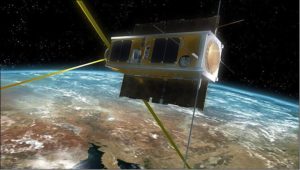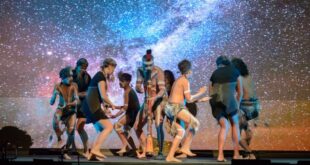
Australia’s Buccaneer Risk Mitigation Mission Cubesat, a joint mission between the Australian Defence Science and Technology (DST) Group and the University of New South Wales (UNSW), has performed according to plan since its launch in late 2017 and is paving the way for follow-on Buccaneer missions.
The mission was launched into orbit in November, 2017, from Vandenberg Air Force Base in California. USA.
Professor Russell Boyce, UNSW Canberra Space director, told Defence Connect that the mission has achieved its key objectives.
“Shortly after the launch, the satellite was successfully commanded from Australian small satellite ground stations at DST and UNSW Canberra Space, which have shared daily communication with the spacecraft over the subsequent months,” he said.
Dr. Coen van Antwerpen, DST mission supervisor, explains that the satellite has successfully deployed its three-metre, X-shaped antenna; part of the DST-Group-developed-and designed payload, and one of the core pieces of technology which will be used in future Buccaneer missions.
“Now that the flight operations and experiments planned for the main part of the mission have been successfully completed, the mission is moving into an extended operations phase to obtain additional valuable information on the ongoing performance of the spacecraft,” van Antwerpen said, according to Defence Connect.
Boyce also said that the team has tested and characterised the performance of the satellite’s various sub-systems in the space environment, including the UNSW Sydney-developed GPS and a UNSW Canberra camera used to monitor the performance of the antenna.
“Following that, experiments have been conducted that extend the state-of-the art for small satellite space situational awareness and test key technologies in preparation for a follow-on mission, in which DST will perform calibration research for the Jindalee over-the-horizon operational radar network,” Boyce added.
“The Buccaneer mission has been extremely successful from the perspective of a partnership to climb the space mission learning curve, as Australia accelerates its momentum in space activity exemplified by the Australian Space Agency commencing last month.”
According to DST research lead Dr Nick Stacy, small, affordable satellites like Buccaneer provide a unique opportunity to support Defence capabilities and develop the Australian space industry. “The 2016 Defence White Paper highlights space research and space systems as an important part of Australia’s Defence capability and national security,” he said.
Buccaneer is one of a number of funded satellites at UNSW Canberra Space, with a further three currently in early development. The satellites will play an important role in gathering data and demonstrating space-based capability, including remote sensing and secure communications, to help meet Australian and international needs and opportunities on the ground.





